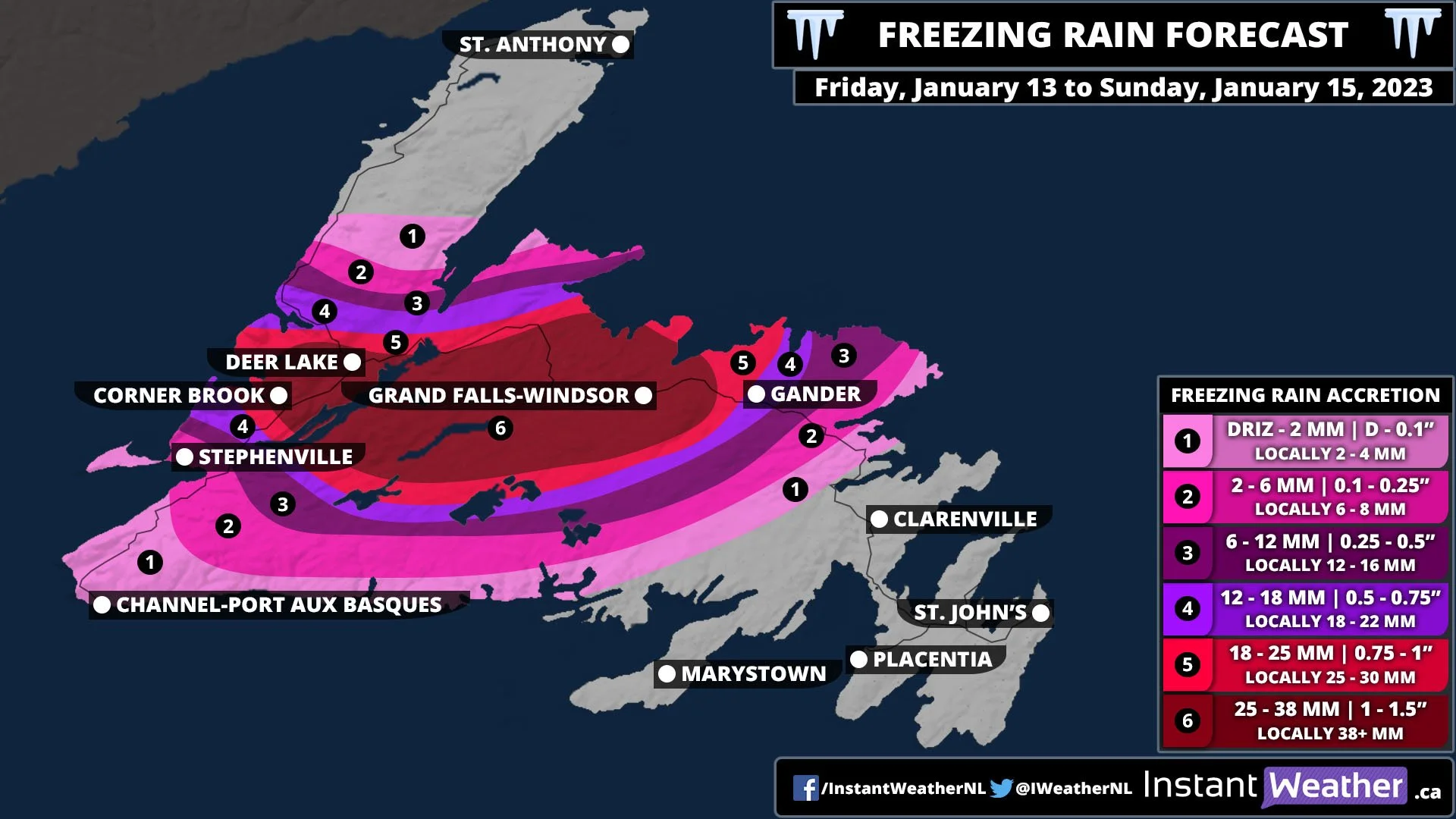Heavy Rain, Damaging Wind Gusts and Freezing Rain Risk to Impact Southern Ontario on Thursday
/As we end the first full week of February, a messy system is on the horizon for Southern Ontario on Thursday. Parts of our region could see up to 20-40mm of rainfall, damaging wind gusts near 90-100km/h for parts of the Lake Erie shoreline and several hours of freezing rain for Eastern Ontario. There is even the risk of non-severe thunderstorms in Deep Southwestern Ontario late Thursday!
This is all expected to start early Thursday morning as we see the first bands of precipitation enter Southwestern Ontario just after midnight. Temperatures for the most part will be above the freezing mark keeping any precipitation in the form of rain. However, we believe a pocket of colder air will lock in over the Dundalk Highlands keeping them just below the freezing mark for a few hours during the mid-morning hours. This means locations such as Hanover, Guelph, Kitchener, Orangeville and Shelburne could experience some freezing rain before temperatures warm up by late morning. Ice accretion of a few millimetres is possible in the hardest hit areas which will be the higher elevations northwest of the GTA.
By the afternoon on Thursday, the freezing rain risk will shift to the Ottawa Valley as we see the potential for prolonged freezing rain. This risk could linger into the evening with persistent freezing rain lasting 4-8 hours before tapering off just after midnight. Expect icy road conditions and even the possibility of localized power outages as total ice accretion could range from 5-10mm. The Algonquin Park region into areas just north of Muskoka will see some freezing rain, but snow and ice pellets will also mix in at times which means less icing is expected there. Snow will be the story in Northeastern Ontario where Sudbury and North Bay could see 10-20cm of snowfall accumulation by the end of Thursday.
Here is an advertisement so we can pay the bills:
Another concern with this system will bring strong to damaging wind gusts developing throughout the day on Thursday. The strongest gusts will be found along the northeastern shoreline of Lake Erie including Norfolk County and the Niagara region. These areas could see gusts exceeding 90km/h mainly during the afternoon and evening hours.
For the rest of Deep Southwestern Ontario, through the GTA and Lake Ontario shoreline, we will see strong winds with gusts around 80-90km/h, but it will be just below severe levels. Wind gusts of between 70-80km/h are possible from Southwestern Ontario through Lake Simcoe and into Southeastern Ontario. Central Ontario and the Ottawa Valley will see gusts remain under 70km/h.
While much of Southern Ontario will escape the freezing rain risk, there is another threat lurking with this system. That is the heavy rainfall with widespread totals ranging from 20-40mm including Southwestern Ontario, the Golden Horseshoe and parts of Eastern Ontario. This amount of rain during winter is quite significant and could lead to localized flooding in some areas.
Rainfall totals of between 15-30mm are expected from the Bruce Peninsula through Central Ontario and the Ottawa Valley. Less rain is expected in the more northern parts of Southern Ontario due to more freezing rain, ice pellets and snow. Although the flooding threat is still a concern as it will lead to the same amount of water once melted.
Be sure to stay safe and dry!
Here is another advertisement so we can pay the bills:




















































